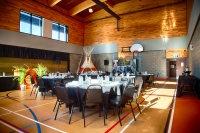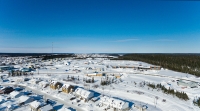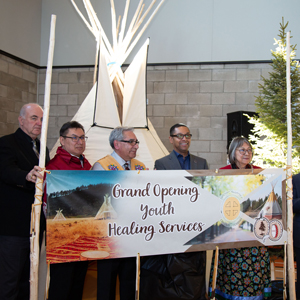
Mistissini, Eeyou Istchee (March 6, 2020) –The Cree Board of Health and Social Services of James Bay and the Cree Nation Government inaugurated the new Youth Healing Services Centre for Eeyou Istchee in Mistissini. At an inauguration event at the new Centre, Dr. Abel Bosum, Chairman of the Cree Nation Government and Mrs. Bella M. Petawabano, Chair of the Cree Health Board, welcomed Cree and Québec officials including Minister for Health and Social Services Lionel Carmant, as well as other distinguished guests who by their contribution made this project possible.
The new Youth Healing Services Centre for Eeyou Istchee is a residential facility for youth who require intensive healing outside their family setting for addictions, trauma, and other serious issues. When fully operational, it may accommodate up to 20 boys and girls between the ages of 12 and 17 referred under the Youth Protection Act. The Centre will replace an outdated Youth Healing Services Reception Centre in Mistissini, while increasing capacity by an additional eight places. The Centre is also adapted to receive a small number of youth in closed custody under the Youth Criminal Justice Act, making it possible for these individuals to carry out rehabilitation programs within the Cree community, for greater cultural safety.
The new Centre is the result of collaboration between the Cree Nation Government and the Cree Health Board. Many years ago, they began discussions to address the growing needs of Cree youth who come into contact with the justice system and social services. Discussions took account of key commitments in the James Bay and Northern Québec Agreement and recommendations of the Cree-Québec Judicial Advisory Committee to set aside resources for the construction of a new Youth Healing Services Centre for Eeyou Istchee and the implementation of additional programs and services for Cree youth.
“The new Youth Healing Services Center illustrates the kind of achievements that are possible when Cree and Québec partners work together with a shared objective. The new Centre honors the spirit and intent of the James Bay and Northern Québec Agreement and of our partnership, among Cree partners and with Québec. It also honors the responsibility we have as a nation to care for our youth with services close to their homes and families.”
Dr. Abel Bosum, Grand Chief of the Grand Council of the Crees (Eeyou Istchee) and Chairman of the Cree Nation Government
“This new Centre will make it possible for our Cree youth to receive services and support in our community, close to the land, in a manner adapted to our Cree culture, values and realities, and in our own Cree language.”
Mrs. Bella M. Petawabano, Chair of the Cree Board of Health and Social Services of James Bay
Quick Facts
- In 2016, the Cree Nation Government and the Cree Health Board signed a formal Partnership Agreement and set out to work with local, regional and governmental partners and stakeholders. Through extensive consultation and collaboration, they developed the blueprint for a state-of-the-art facility that reflects best practices. Close collaboration among the partners allowed construction to begin immediately, and to proceed quickly.
- Under the terms of the Partnership Agreement signed in 2016, the Cree Nation Government built the new Centre pursuant to a commitment under Section 18 of the James Bay and Northern Quebec Agreement (1975). The Cree Health Board will operate the Centre and deliver programs to the youth residents.
- The new Centre is a regional hub for services and programs for youth in all the Cree communities, including group homes, camps for land-based healing and foster placements. The Cree Health Board offers a Family and Youth Empowerment approach as a way of preventing unnecessary referrals to Youth Protection, as well as community partnerships to give families and youth early intervention to prevent crises.
- The new Centre has a capacity of 20 regular places for youth placed under the Youth Protection Act, 8 more than the previous facility. The Centre also has 4 places for secure custody, 1 isolation room, and 2 secure places for intensive supervision.
- The Centre also has 2 classrooms, open and closed offices for intake, meetings and consultations, family meeting rooms, cultural and clinical spaces, and a gymnasium. The facility includes outdoor areas equipped for sports and recreation.

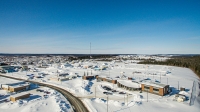
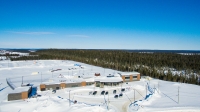
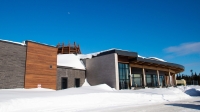
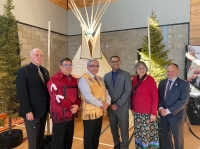
_800.jpg)
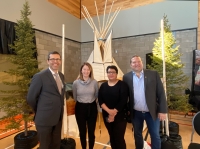
_800.jpg)
